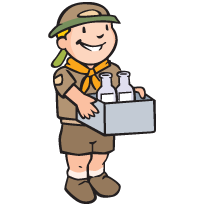Boston Children's Museum
308 Congress Street, Boston, MA 02210
617-426-6500
© Boston Children’s Museum 2025
Website Design by JackrabbitMuch of the food we eat started out as something else. Bread comes from wheat, ketchup comes from tomatoes and butter comes from milk. The process by which these foods are created is often a mystery to children, and by experimenting with making their own versions of these foods, they can begin to understand and have a greater appreciation for the fuel they are putting into their bodies.
Make some butter ahead of time so you are familiar with the process.

Ask your students to name as many different foods as they can that are made with milk. How do they think milk becomes those foods? If butter is not on the list, ask them what they think butter is made out of. If they say “milk” or “cream”, ask them if they think they can make their own butter just using milk or cream. If they do not mention these ingredients, you can tell them that you would like them to experiment with cream and then milk to see if they can make butter using just those ingredients.
Make your own butter!
After every team has made butter, bring them together to share their observations with each other. What did they notice in their jars the first time they stopped shaking? There should have been something thick and frothy in their jars. That was whipped cream. What happened after they shook for just a little longer? There should be a ball of butter, surrounded by liquid. This liquid is buttermilk.
If you have time, try making butter with whole milk, light cream, etc. You should notice that no matter how hard they shake, they cannot make butter with any of the milks. This is because there is either not enough fat in the milk, or because the milk is homogenized, which makes the fat droplets in milk too small to stick together and make butter.